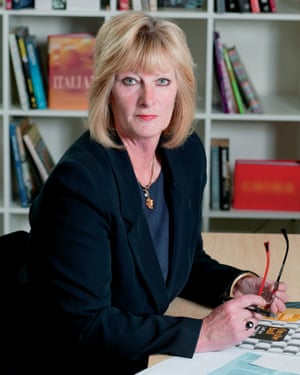Since 1869, the Herald and Weekly Times has been the paper that regional Australia has turned to. But in the last two weeks, the paper run by News Corp out of the Melbourne office has cut four experienced reporters.
The cuts came after six reporters left and an external review was conducted to investigate bullying claims, according to Crikey.
This exit of talent spells bad news for rural communities facing the worst drought in a generation. But while large publishers are cutting staff and reducing coverage, independent publishers are thriving in many rural communities.
Almost three years ago, Alison Andrews moved back to her hometown of Longford in northern Tasmania. After decades of working in the media, she cashed in her super and bought the town’s tiny newspaper, the Northern Midlands Courier.
She sells the ads, takes the photos, writes the stories and organises distribution.
And it sounds like she’s having the time of her life.
“It’s going brilliantly,” she says. “The circulation has gone up – people love that it’s a paper about them and their area. We’re proving that people still want newspapers in country areas.”
Similarly, Jane O’Connor had a big career heading bureaus at Australian Associated Press, and working for News Limited and Fairfax. She’s now running the Mountain Monthly in Kinglake, north of Melbourne, and says:
“I started out on hyper-local news and now I’m full circle. It’s ethical, holistic and about understanding your community and catering for it.”
Further north-west, in central Victoria’s Castlemaine, acting newspaper editor Angela Crawford is also upbeat. The Castlemaine Mail may have been around for 160 years, she says, but it is going from “strength to strength”.
So how is it really going in the bush?
It’s impossible to make a neat diagnosis of the health of regional newspapers. It’s a mixed bag across Australia, with newspaper fortunes often fluctuating in sync with the communities they serve.
Papers in once-thriving mining towns, for instance, close when the mines do, while tree- and sea-changers have helped revitalise community newspapers outside capital cities.
It’s an area ripe for further study. There is no one in Australia currently keeping statistics on job losses in regional papers or tracking which papers are folding and which are opening. Yet examining the boom and bust cycles of local papers might well help us better understand the communities they serve.
In November 2017, the University of Technology Sydney’s Centre for Media Transition (CMT) went some way towards assessing the health of regional media in Australia, crunching the readership numbers and interviewing people in regional communities in New South Wales.
After decades of working in the media, Alison Andrews cashed in her super and bought the Northern Midlands Courier.
Their report found there was “no point sugarcoating … a 20% decline in regional print newspaper sales between 2014 and 2016 and a 10% decline in regional TV revenues since 2011. Newsroom numbers have been cut, services curtailed and in an effort to cut costs, products dropped and services aggregated”.
Last year the federal government announced a $60m rescue package for local media publishers that funds cadetships, grants and journalism scholarships for students from remote and regional areas. But it’s likely many regional newspapers will continue to struggle, says CMT co-director Peter Fray, as the rescue package doesn’t stop social media giants such as Facebook from cutting into advertising revenue. “If you are a business in Tamworth, on Facebook you can now target everyone aged 25–45 in Tamworth. There’s more competition,” he says.
Cost-cutting at regional newspapers isn’t helping. “There’s a real concern that the dynamics we see in the cities are playing out harder in the country,” Fray says. “If you have a newsroom with three people and there’s a 30% cut, then you really have to make some decisions about what you cover.”
Ownership matters
The independently owned Castlemaine Mail maintains a shopfront in the heart of town, where locals drop in to share news tips or place ads.
“Castlemaine Mail is in a really strong position as a news provider because it doesn’t really have any competition. It’s the sole newspaper for Castlemaine,” Crawford says.
She quotes statistics from market research gathered by the Victorian Country Press Association in 2016. “[They] found our strongest age group in terms of readership was the 31 to 39 and 40 to 54 bracket.” Metro newspapers have a median readership age of about 60.
The newspaper – together with its sister paper the Midland Express (which covers a greater swathe of the region) – is owned by the Ellen family.

“We are fully independent with a circulation of 22,000-plus per week for the Midland Express [a free paper distributed to letterboxes] and 3,000 for the Castlemaine Mail [which sells for $1.50],” Crawford says.
Although independent media ownership can be a precarious proposition, there are also risks when a small paper is managed out of Melbourne or Sydney, as part of a larger media group.
In July 2016, News Corp closed seven small Victorian newspapers, most of them covering Melbourne’s outer suburbs. Later that same year (surely an annus horribilis for Australia’s small papers), News Corp acquired APN News & Media’s newspaper stable, comprising 12 daily papers and 60 community titles covering northern NSW and Queensland. Meanwhile Fairfax was cutting jobs at the Border Mail, the Courier (in Ballarat) and the Illawarra Mercury, having already done so at regional titles in South Australia and suburban Sydney.
The Nine/Fairfax merger announced in July and yet to be approved has also thrown into doubt the future of Fairfax Media’s 160 community and regional newspapers.
According to a report in the New Daily: “Australian Community Media, the branch of Fairfax that owns and operates the regional newspapers, is by far the worst-performing arm of Fairfax’s six main subgroups.
“Last year, ACM’s revenue dropped by 11% and profit before tax fell by a massive 19%. The regional papers’ profitability has consistently plummeted in recent years, from $169m in 2012, to $67.5m.”
The deal is now before the Australian Competition and Consumer Commission, and the Media Entertainment and Arts Alliance has argued that it is against the public interest.
Andrews, editor of the Northern Midlands Courier, says of the situation in Tasmania: “What I have come to believe is that if you are a country newspaper owned by Fairfax, you are doomed … you will be shut down eventually. Fairfax have chopped and their staff are gone and now it’s just juniors. Murdoch has done their restructure differently. They have also made a lot of cuts but have hung on to their senior people and they [News Corp] might last a bit a bit longer – in this state especially.”
Jane O’Connor believes one of the reasons for the success of Kinglake’s Mountain Monthly is its ownership structure.
The Northern Midlands Courier services a broad but sparsely populated area in northern Tasmania that previously relied on the Launceston Examiner for its news.
“My main source of revenue is advertising and I make a living. It’s well received in the community because it’s their local newspaper – that’s the key,” Andrews says.
But for every journalist/entrepreneur such as Andrews, there are papers folding or being run by people who are neither trained nor equipped to cover the news.
Fray says: I have a concern about news ‘deserts’ in this country – where you lose reporters or a paper shuts and the news from that town simply doesn’t get reported anymore.
A growing number of local papers, for instance, have resorted to cutting costs by taking content from other papers in their stable.
There’s a real danger if you’re in Warrnambool and your news in the paper is all about Ballarat,” Fray says. “People are not stupid. There’s this idea that the regions are all the same – and they’re not.”
O’Connor believes one of the reasons for the success of Kinglake’s Mountain Monthly is its ownership structure. The newspaper was set up in 1981 as a community cooperative with a board and paid staff.
I’m the reporter – myself and the whole community are reporters,” O’Connor says. “It’s that hyperlocality. It sounds like ratty old socialism but if the people have a sense they own it – that it’s not this remote thing that people impose [on them] – then they would pick up the pitchforks if anyone threatened it.
Social media
As in the metropolitan press, social media poses a threat to regional newspapers.
Community Facebook pages administered by local volunteers have been springing up in towns and suburbs across Australia and have whetted an appetite for hyperlocal news.
According to the CMT report, “Almost two in five regional news consumers say they gain local news from social media at least once a day. For more than two-thirds, it’s at least once a week. Even if the primary source of that news is legacy media, the greatest financial beneficiary is the digital platform.”
Castlemaine, in the central Victorian goldfields region, is a thriving town with a highly engaged population (of about 8,000) and an active community Facebook page called Castlemania. The page updates group members on everything from events to car park redevelopment at the train station, to debate over whether the local council would fly the rainbow flag for the marriage equality vote.
But Crawford believes that despite the popularity of such social media sites, the local paper is not being supplanted.
“There really can’t be a comparison. Sites like Castlemainia are not a trusted news source … Everyone who is on there as a member knows to take it all with a grain of salt.”
Crawford maintains that you can find most trusted local news in the local paper.
“We are stronger than ever,” she says. “If you had asked me [about the paper] six years ago, when [media] forecasting was so dire about what would happen once NBN was here, I was not sure about survival. [But] regional press has been less impacted than other media. The people in our communities are very engaged. Our communities have got a high percentage of people who live and work here.”
Conversely, suburban papers are more vulnerable to closing because commuters tend to be less engaged in their communities, Crawford says.
“Being made up of staff members who live and work here – we are also part of these communities. We have physical office space. There is access, trust, familiarity and respect. We are not the kind of reporters who try and find the person whose house was burnt out in a bushfire.”
• This is an edited version of a piece first published in the Walkley Magazine online, part of the Walkley Journalism Explored Essay Series supported by the Copyright Agency’s Cultural Fund
• On 22 October 2018 this article was amended to correct Angela Crawford’s name. A previous version said her first name was Andrea.
• On 8 October 2018 this article was published by The Guardian Australia and written by Brigid Delaney.

